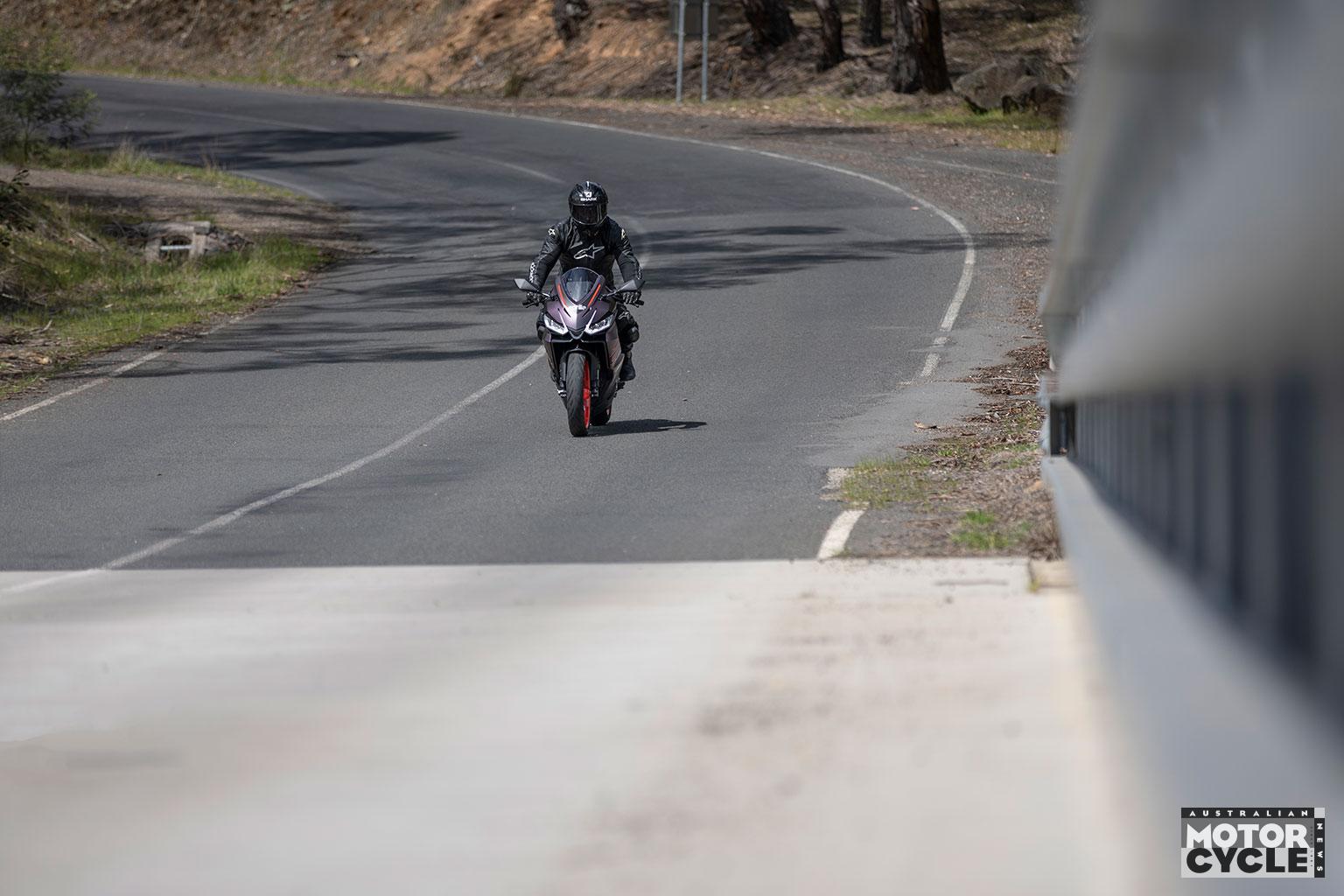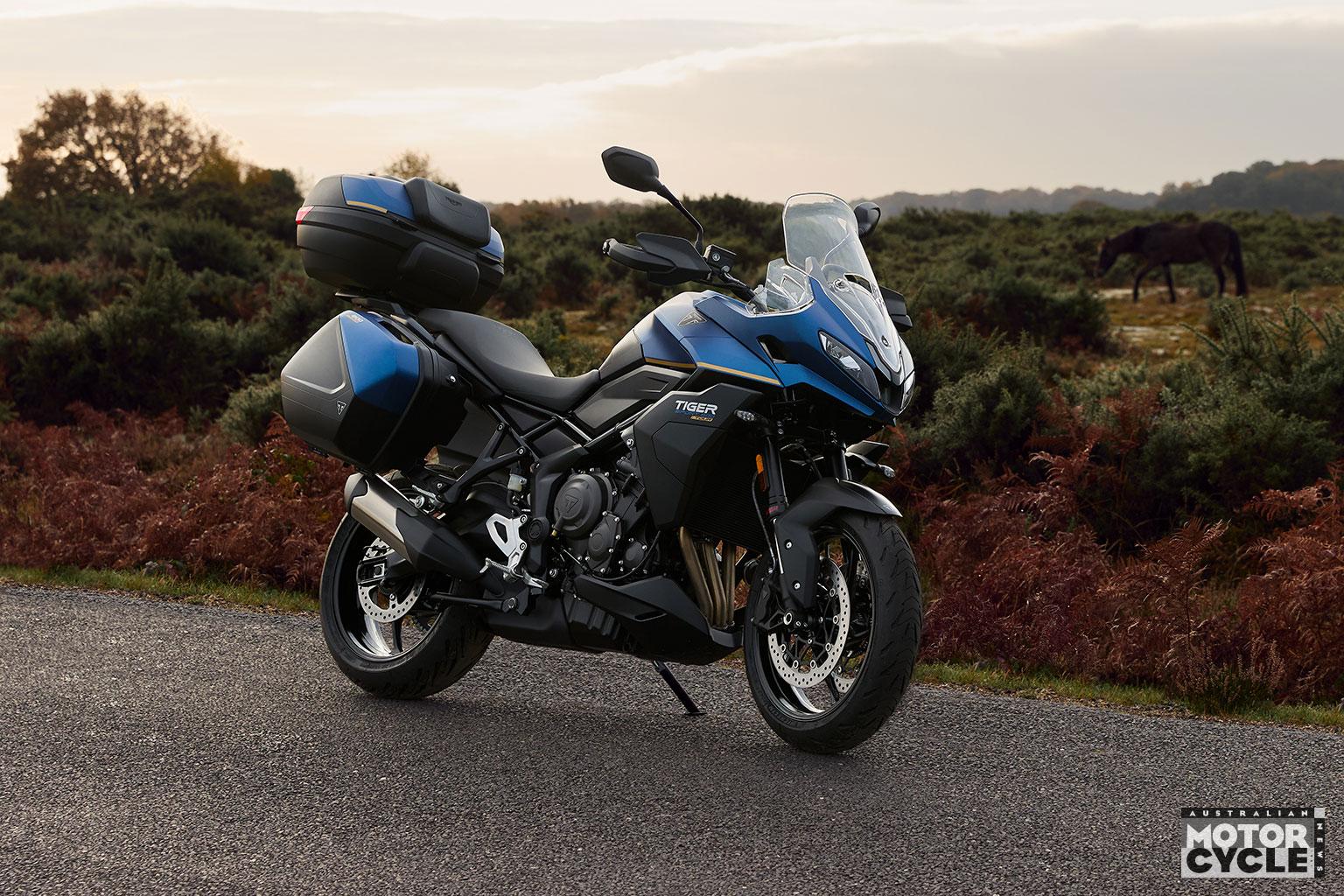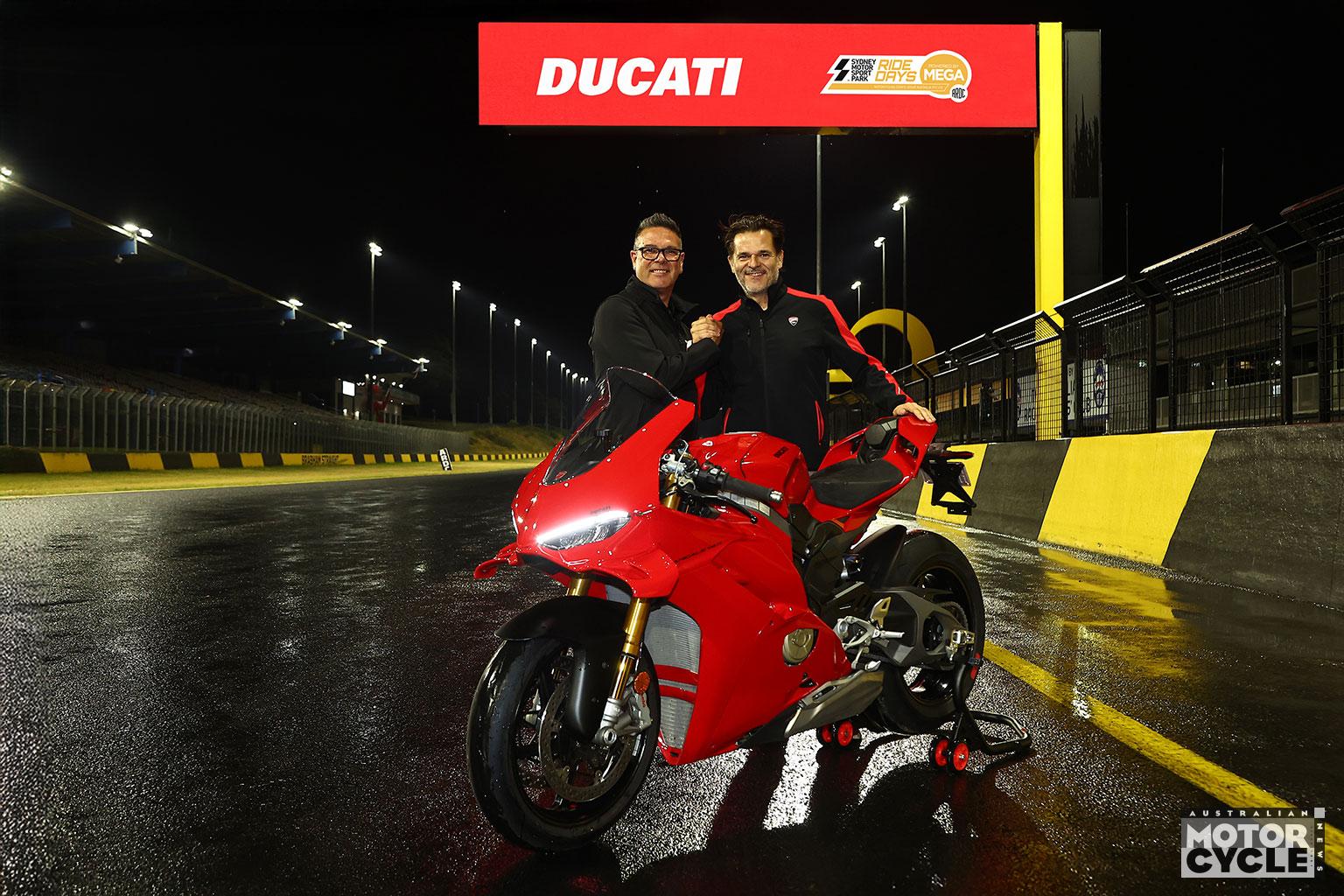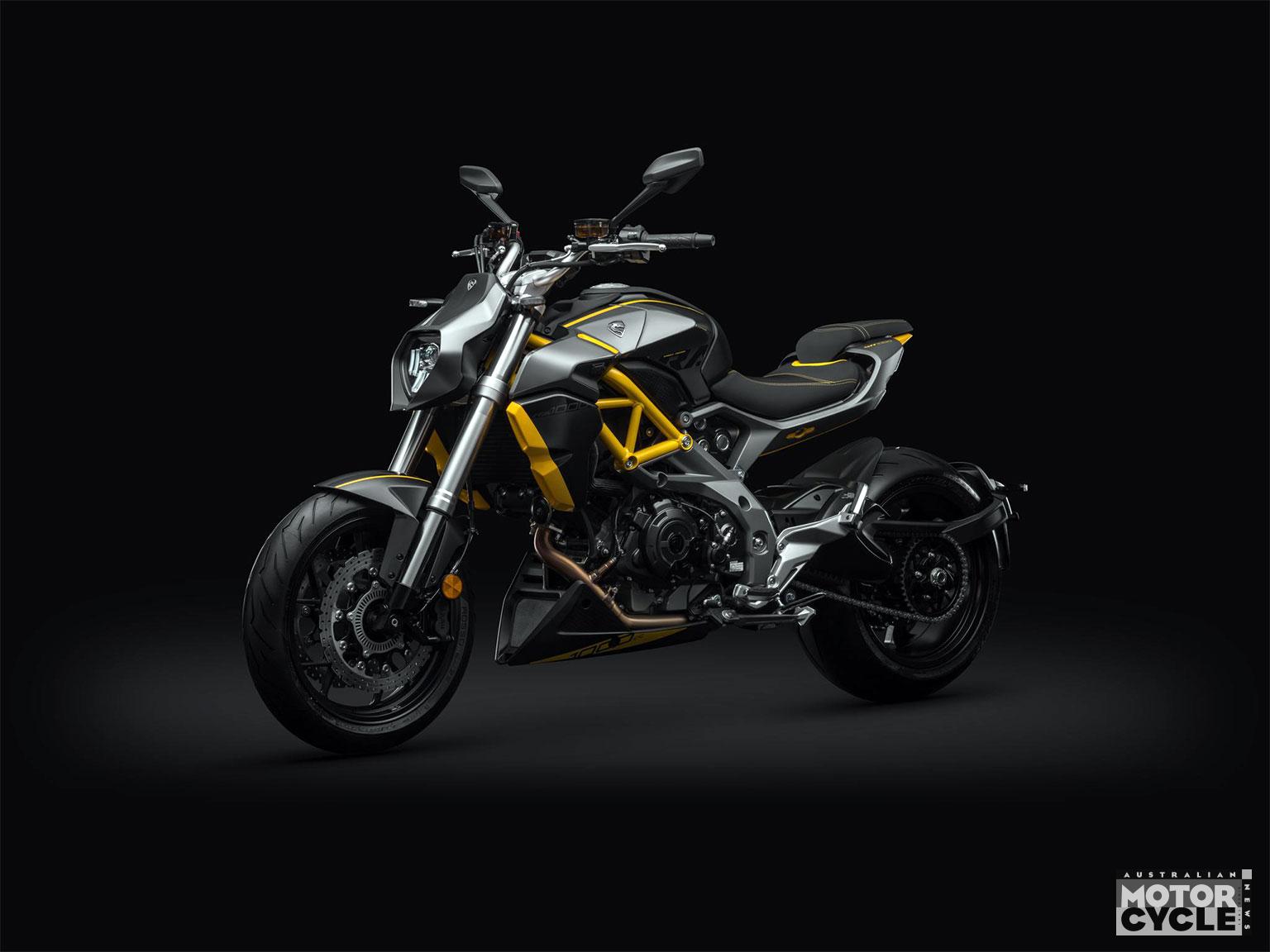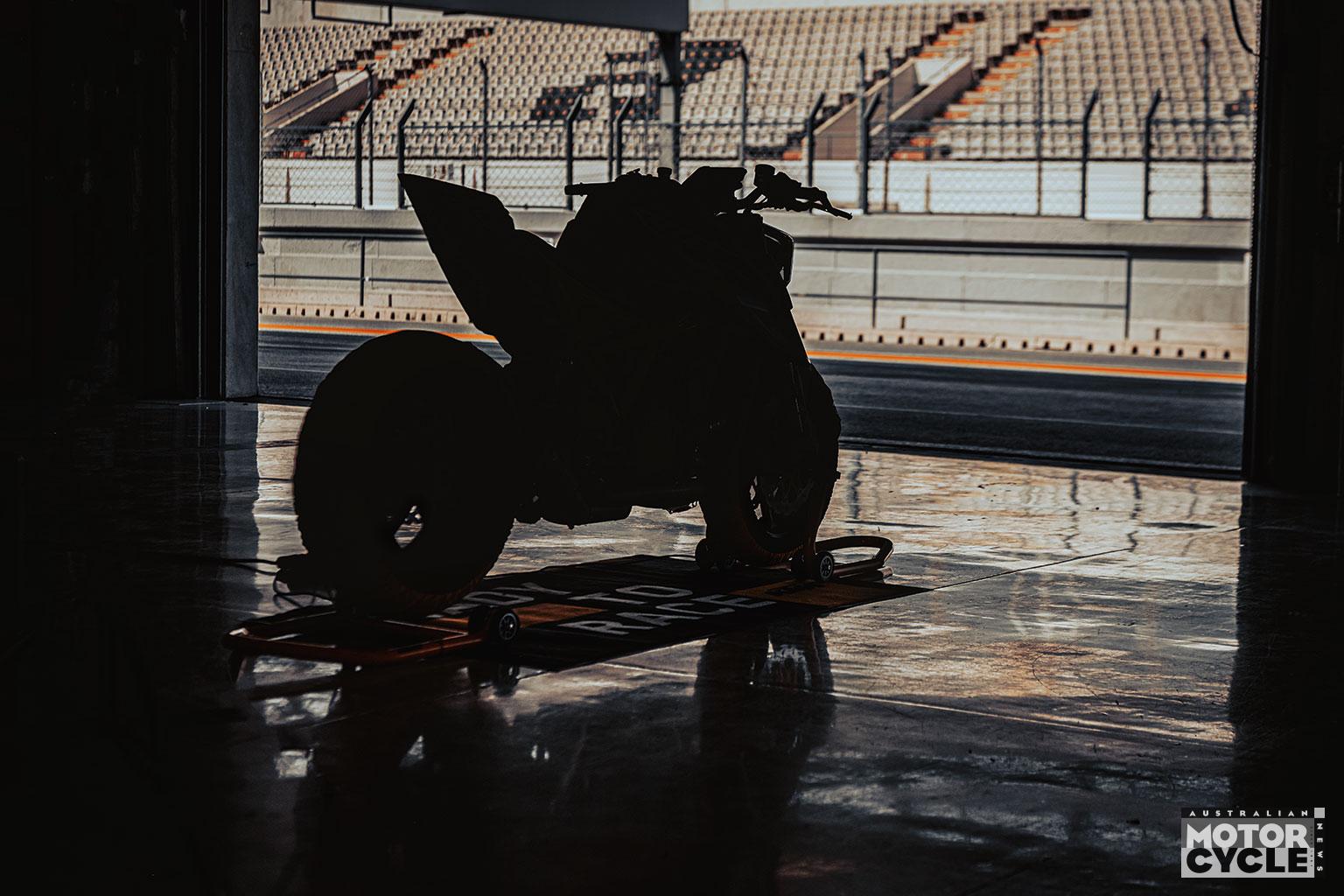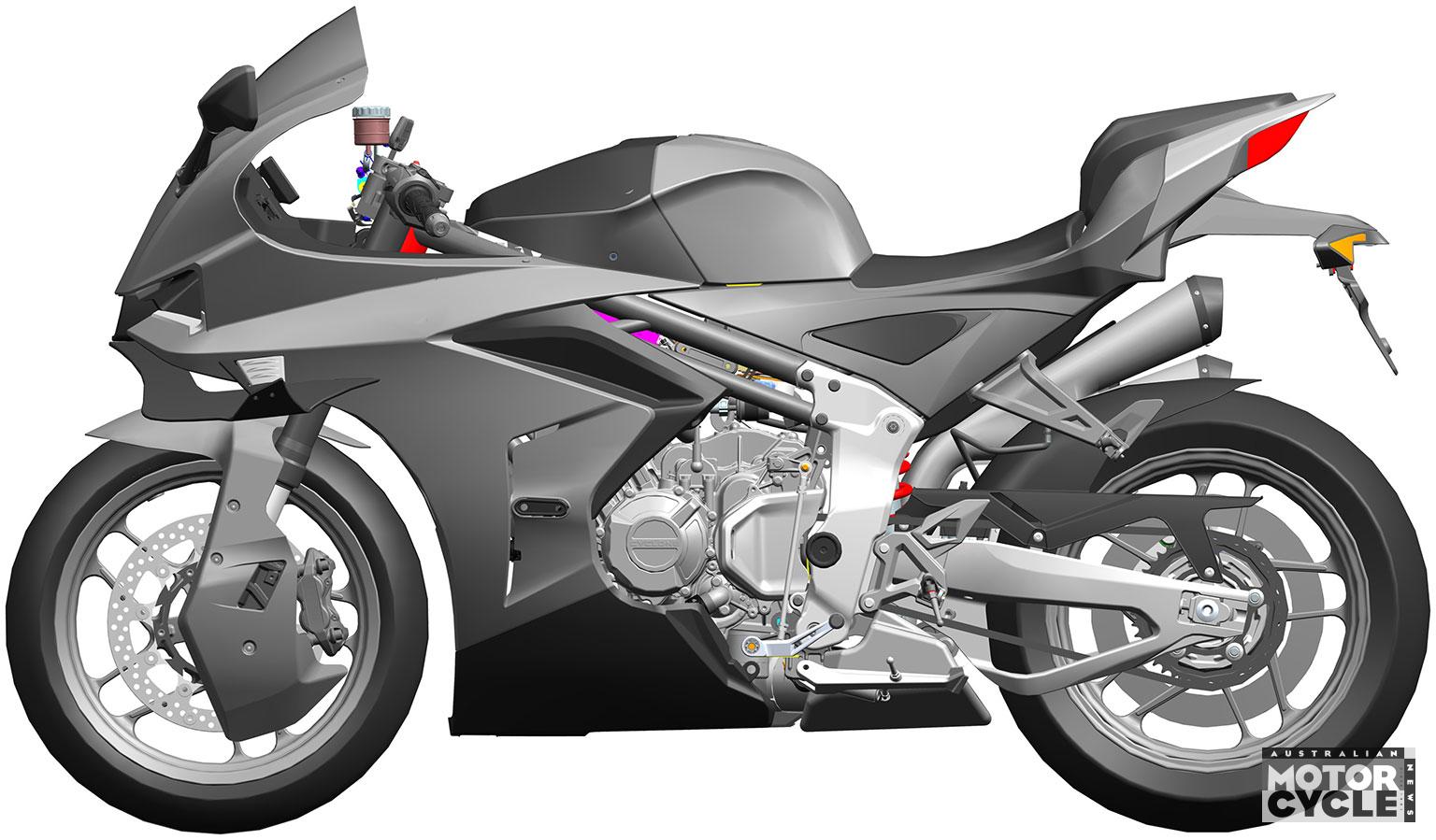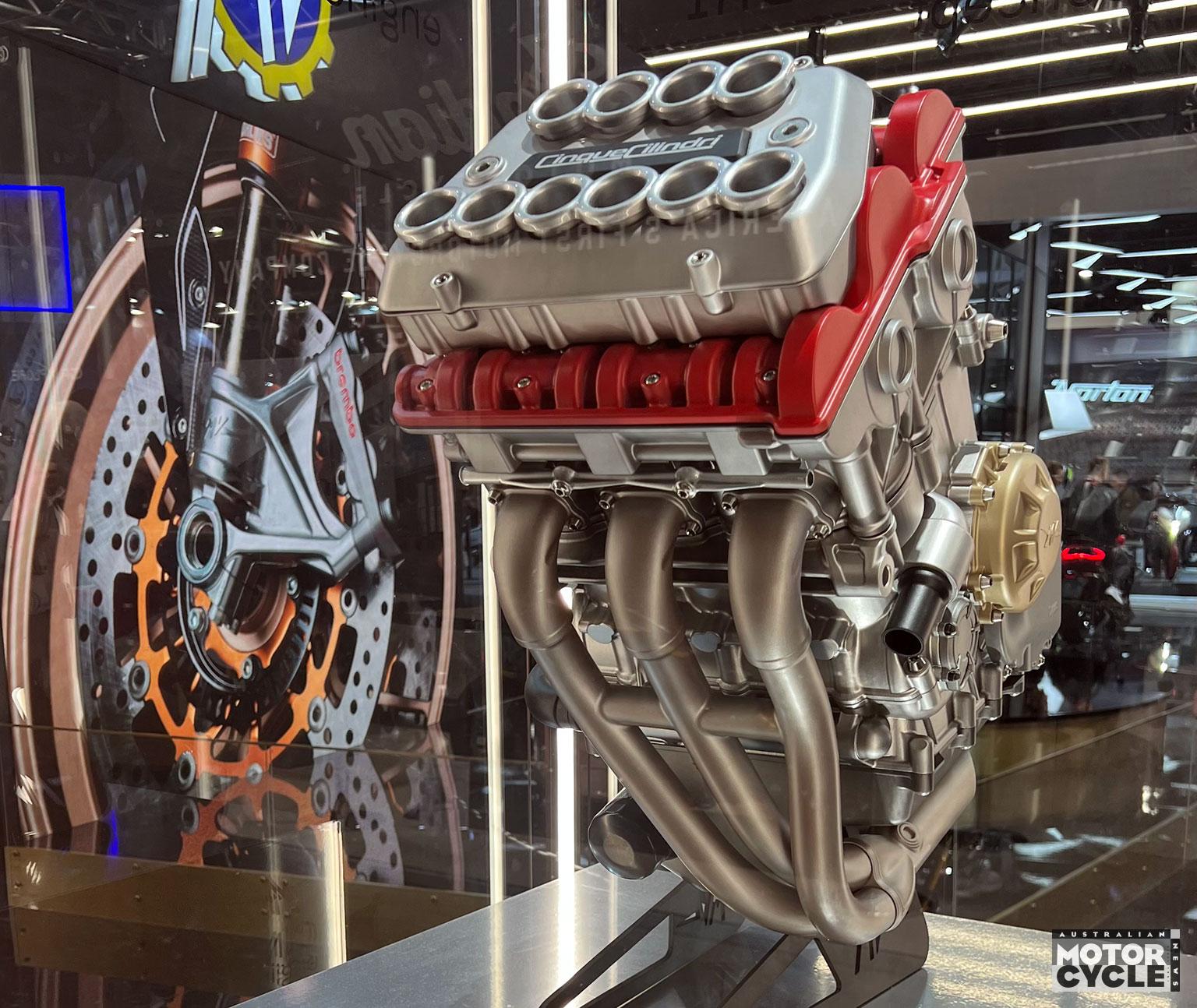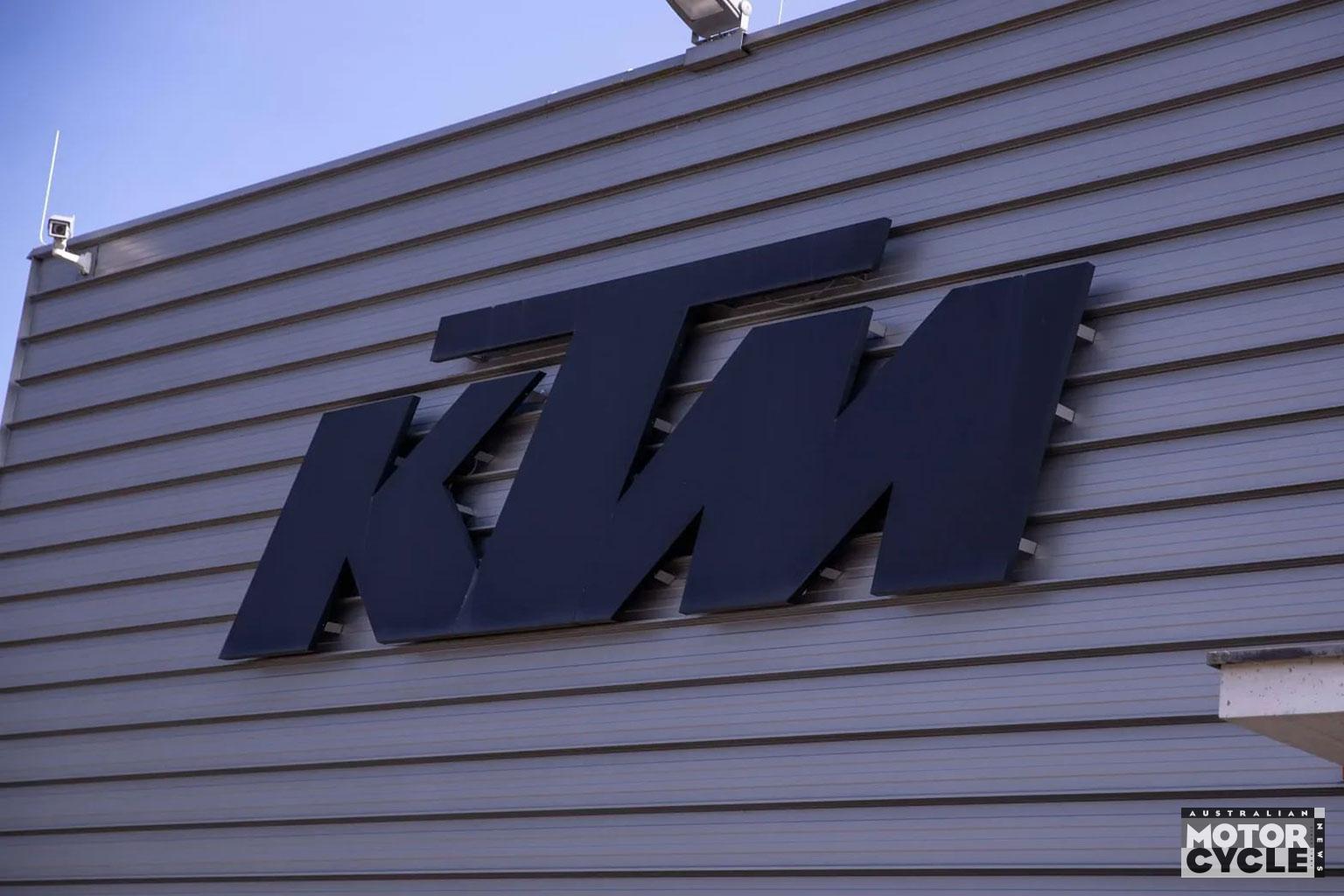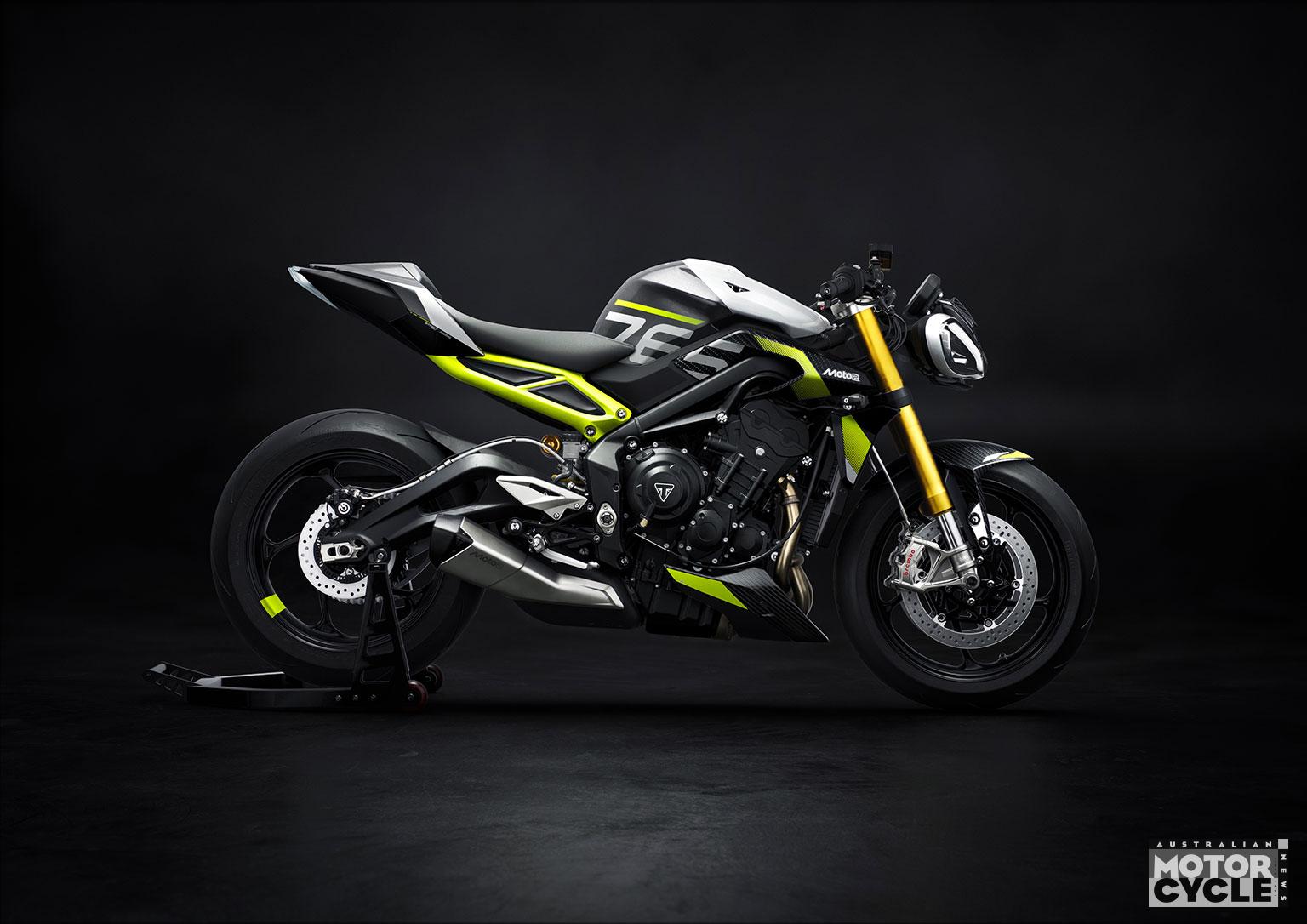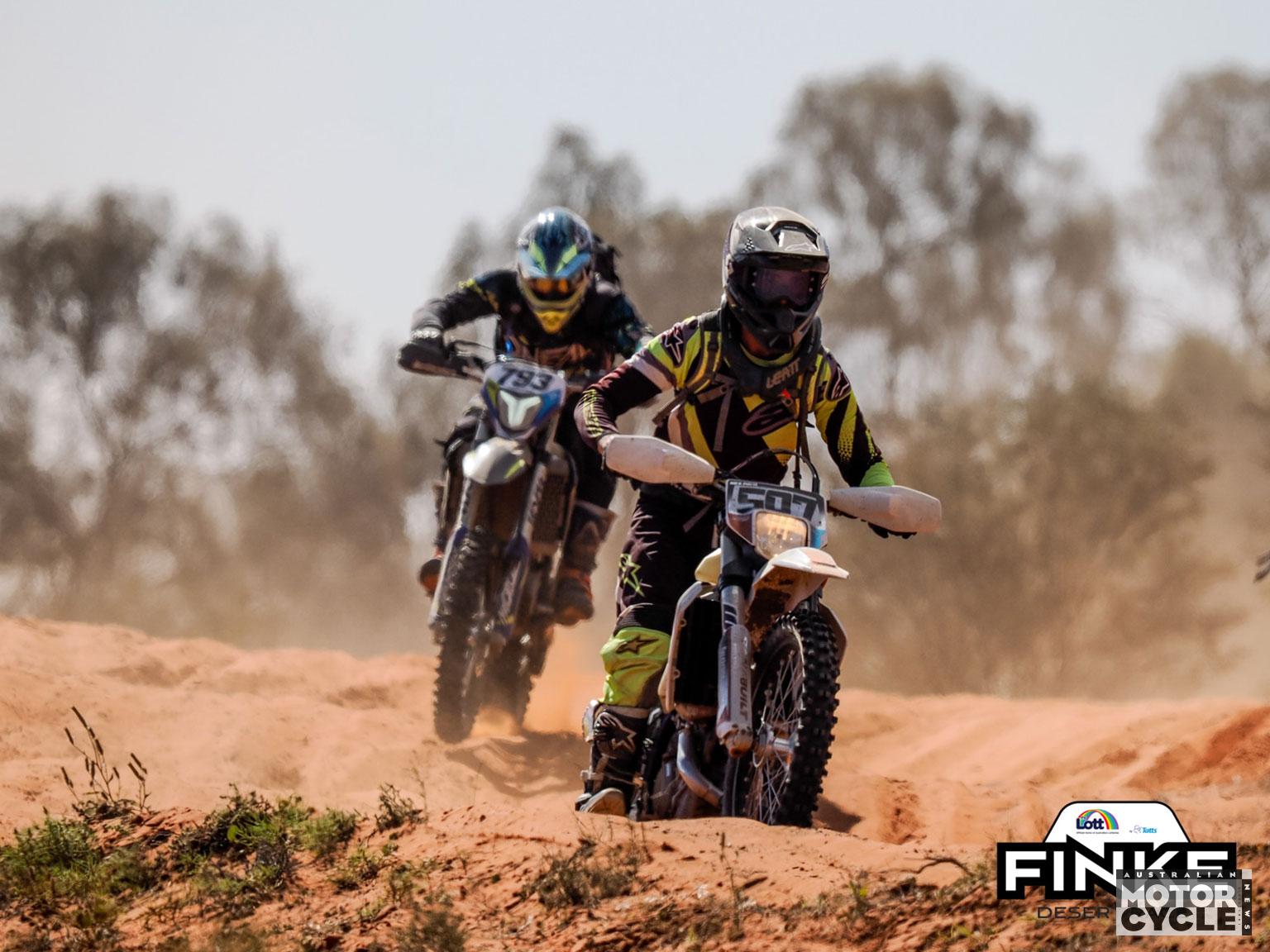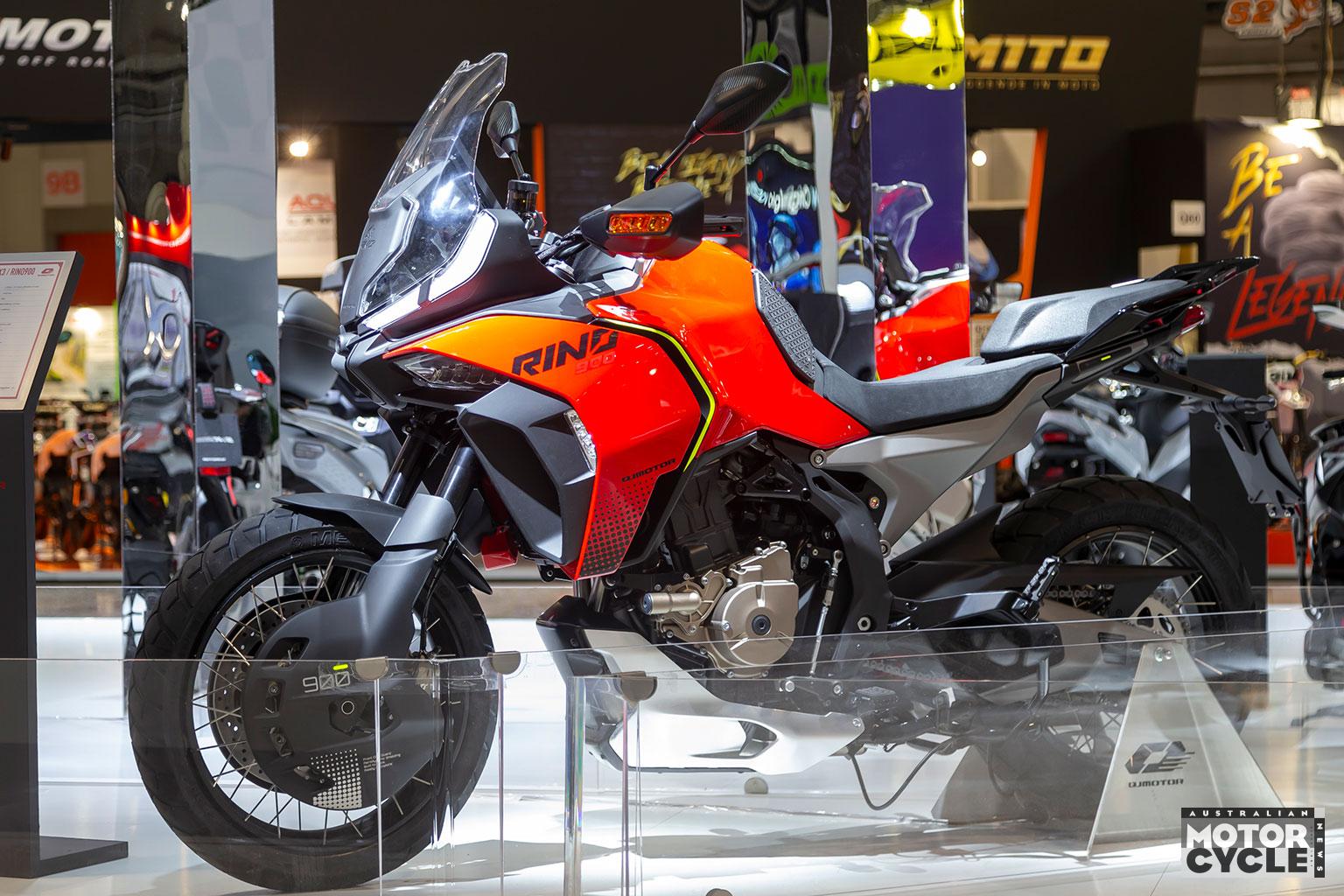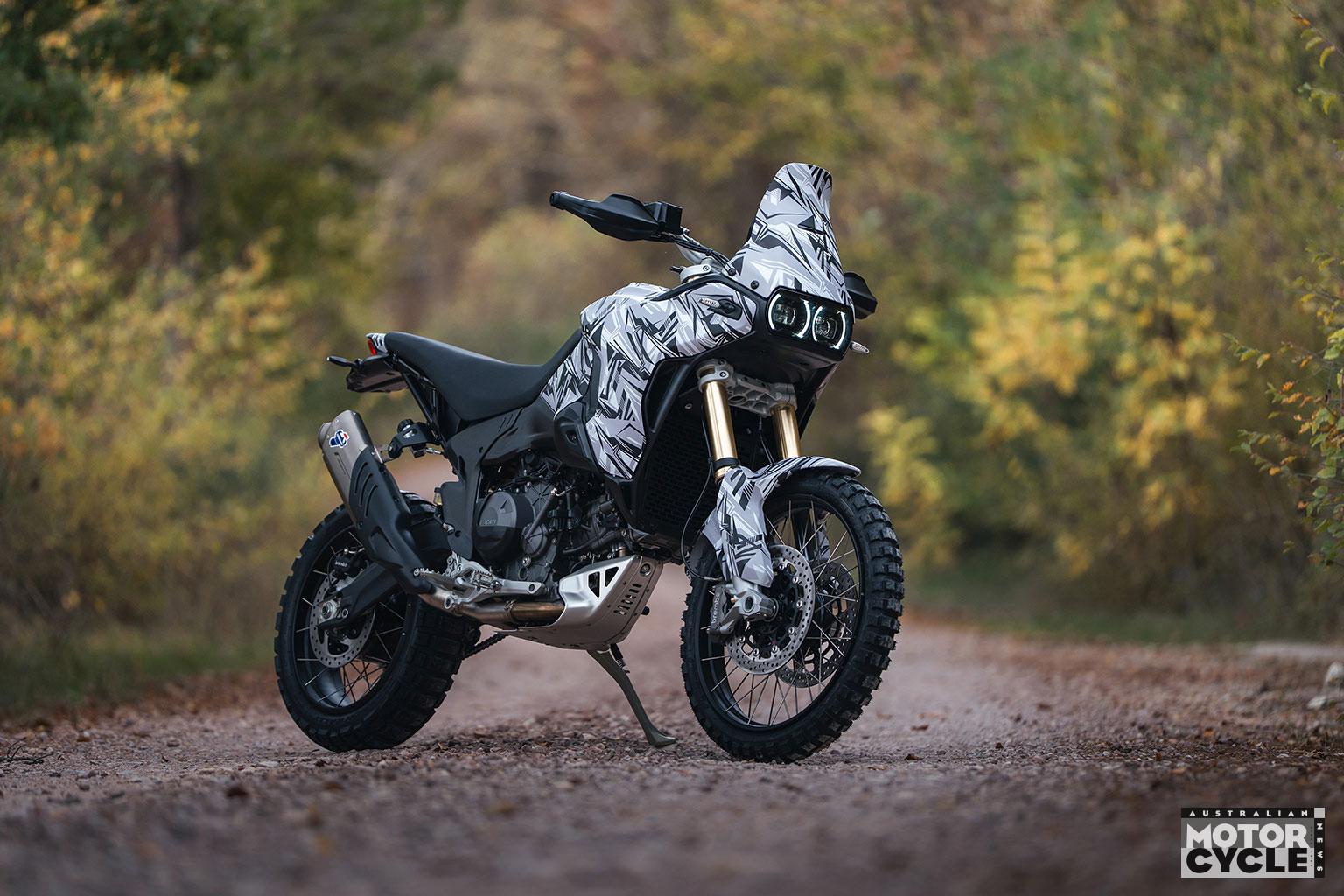King of The Baggers champ Troy Herfoss will have another Aussie rival to contend with this year, after Melbourne brothers Ken and Barry Horner declared they are throwing their hats in the ring.
The USA’s MotoAmerica road race programme took a definite Down Under turn in 2024, with reigning three-time Australian Superbike champion Troy Herfoss becoming the new King of the Baggers in his rookie year of racing on North American racetracks. He did so after swiftly coming to grips with the humungous torque and massive bulk of the factory Indian Challenger he rode to the title. But Herfoss, 38, was also a contender in the KOTB’s sidebar series, the 10-race Roland Sands Mission Foods Super Hooligan championship, in which he shocked the MA paddock by winning the opening round, and his first race ever at the Daytona International Speedway, aboard another Indian factory V-twin, the leaner, lighter FTR1200. But once he began carving out a lead in the Baggers series, Troy focused on that, leaving his teammate and defending champion Tyler O’Hara to make a run at clinching a repeat Super Hooligan title, in which he came up four points short behind the new Harley-Davidson mounted 2024 champion, Cory West.
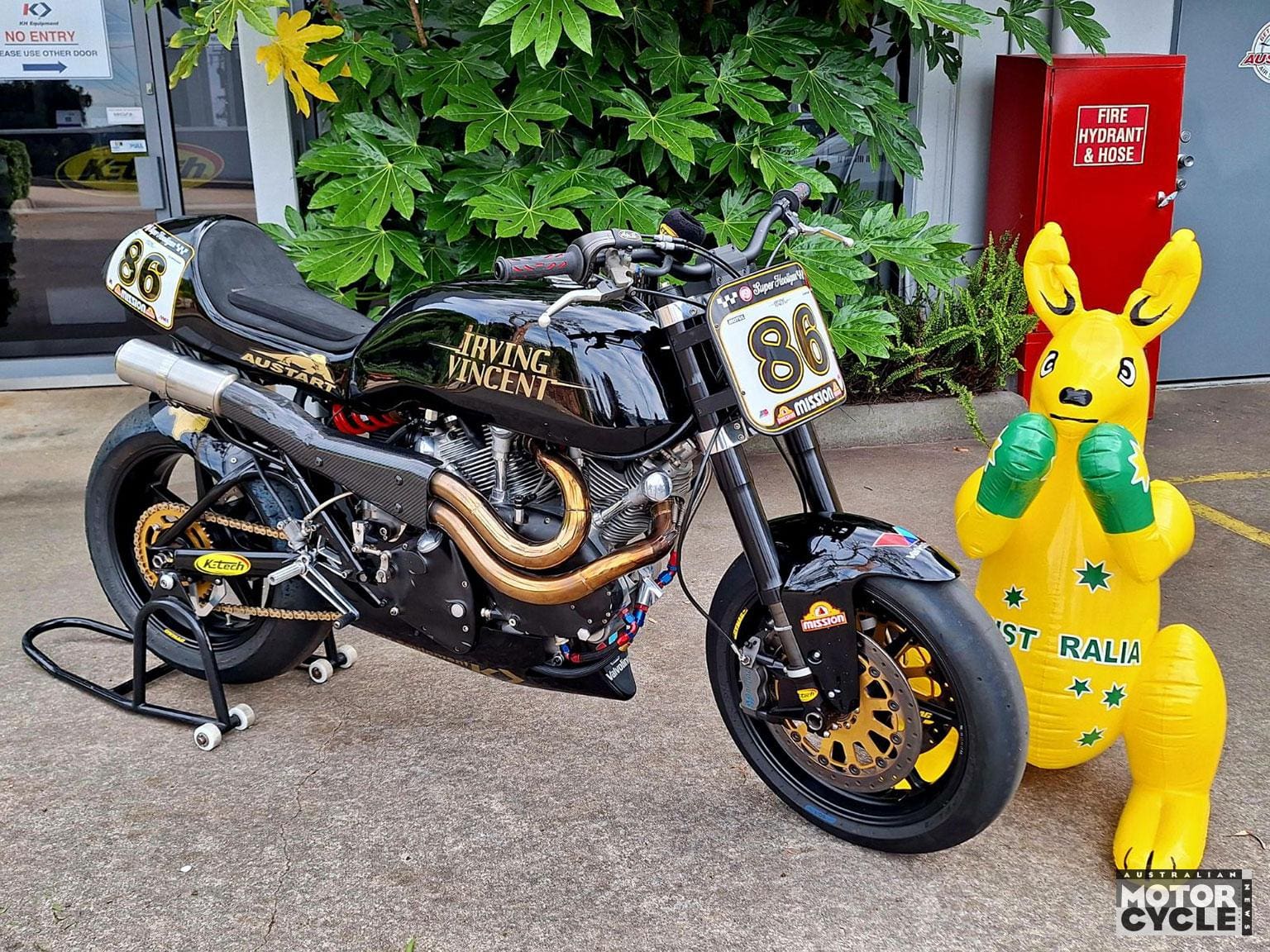
Herfoss will be trying to unseat West in the coming season, while also defending his KOTB title, again riding for Indian. But he’ll have another Aussie rival to contend with from mid-season onwards, with the revelation that Melbourne-based brothers Ken and Barry Horner, creators of the succession of crowd-pleasing Irving Vincent V-twins which have dominated Australian Post-Classic racing since 2006, are building a bike to take on the established teams in the 2025 Super Hooligan race series. This 100 per cent Australian-built bike will make its debut at the mid-season Laguna Seca round on July 11-13, ridden by reigning Aussie Post-Classic champion Beau Beaton, whose spectacular riding style in confronting the much more powerful 180bhp air-cooled 1300cc four-cylinder Vintage Superbikes aboard the Irving Vincent 1300 in the Philip Island GP circuit’s annual International Challenge, made him such a fan favourite. Sadly, the Island Classic race meeting for Historic bikes which showcased elbows-out high-speed racing between teams from Australia, the USA, UK and NZ is no more – but it’ll be American race fans who’ll benefit from that, since it’s given time for the Horners to switch their focus to building a bike that can take on the best of modern-day V-twin racers.
However, it’s perilous to underestimate the Australian Irving Vincent team’s chance of success, in taking the giant step of crossing the Pacific Ocean to go head-to-head with the factory-backed Indian and Harley-Davidson Super Hooligan teams and their liquid-cooled multi-valve V-twin racebikes, with a seemingly archaic air-cooled motorcycle with just two valves per cylinder operated by mere pushrods. Because they’ve already been there, done that, once already, making the running score USA 0, Australia 1!

See, it’s always nice when the underdog triumphs, and David beats Goliath – especially when even getting to the startline was a battle against the odds. But that’s indeed what happened at the Daytona International Speedway in March 2008, when the Irving Vincent OHV V-twin of old-school appearance with minimal streamlining, which had only turned a wheel for the first time just seven weeks earlier, rumbled onto the Florida bankings and defeated a full grid of liquid-cooled multi-valve Superbikes ridden by quality racers, including two-time former World Superbike champion Doug Polen, to win the World’s premier ProTwins race on the team’s first appearance outside their Australian homeland. Craig McMartin’s victory on the Irving Vincent 1600 in the Daytona Battle of The Twins, defeating the allegedly faster, supposedly more sophisticated Superbike competition, was sweet reward for a high-speed development programme by Ken and Barry Horner. Will history repeat itself?
That’s certainly what Ken Horner, the elder of the two brothers, is hoping for. “We’ve wanted to return to race in America ever since that Daytona win,” he says, “but a combination of business pressures and other commitments have prevented us doing so – until now.” Those commitments included coming to Britain in 2014 to permit Craig McMartin and Beau Beaton to beat the cream of British Classic racers in the prestigious Goodwood Revival on a genuine girder-forked 1948 Vincent Series B Rapide, which the Horners purchased and developed into a race-winning bike. They then won two successive Australian Superbike Series Pro-Twins titles in 2015–2016 with Beau Beaton aboard a fuel-injected eight-valve 1600cc version of their Vintage bike, defeating liquid-cooled opposition from Ducati, Aprilia, KTM etc.
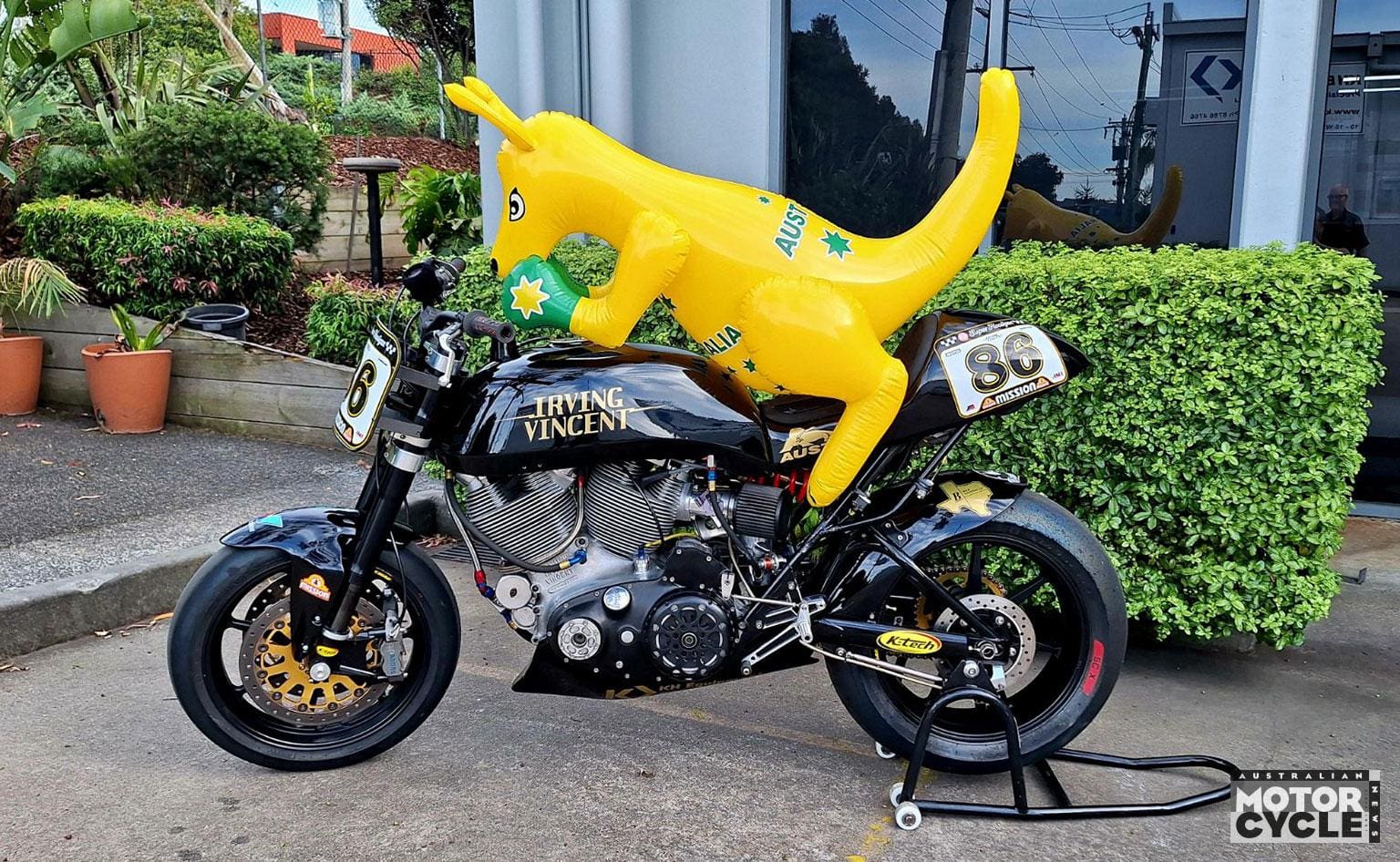
The Horner brothers’ self-built creations are conceptually based on the historic Vincent 50º V-twin motorcycle [see History sidebar] and are built as a tribute to its creator, legendary Australian engineer Phil Irving, who went on to design Australia’s Formula One Repco V8 race engine which took Jack Brabham and Denny Hulme to successive F1 World Championships in 1966-67. The Horners struck up a friendship with Irving after he moved back to Australia, where Ken and Barry both tasted success in Sidecar racing with self-built outfits, in Ken’s case using a 1300cc Vincent motor he tuned himself. He retired from racing in 1977 to start his own engineering company, later joined by Barry, and today K.H. Equipment Pty. annually exports over half its production of Austart air starters to China and the USA, for the mining and fuel exploration industries – any hazardous environment where sparkless function is a prerequisite. Its 30-strong workforce turns out high-precision machined components on an array of hi-tech CNC equipment.
OK – but what is Super Hooligan racing?
Well, like the King of the Baggers series this is a two-wheeled equivalent of NASCAR, a confrontation between Indian and Harley-Davidson that has sold heaps of seats at MotoAmerica events, and between them, the two categories are generating hundreds of millions of online impressions every year. Indeed, together they’re fourth in terms of engagement metrics on YouTube, behind Formula 1, MotoGP and NASCAR – but ahead of Supercross, and Superbike!
Both categories were essentially the creation of the fusion king of Custom cool, former AMA 250GP road racing champion turned trend-setting designer Roland Sands. He’s justly acclaimed as the founding father of the crossover culture between choppers and racebikes which so many other designers have since picked up on, moving the two-wheeled Custom scene from a backstreet art form to a mainstream element of modern-day motorcycling. This means bikes that steer and go and stop and handle better than OK in real world riding, besides being a blank canvas for designers to express themselves on.
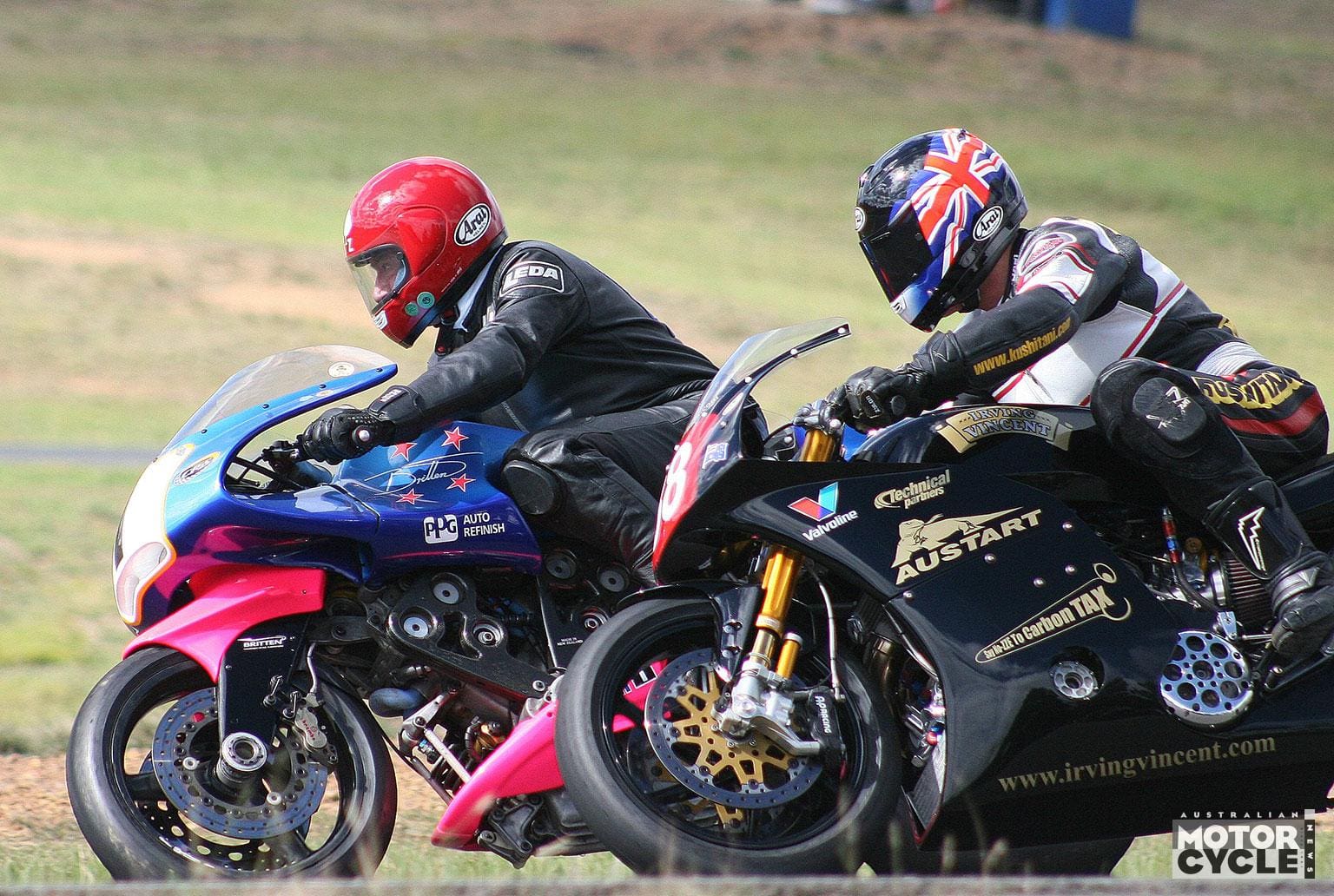
“I like the idea of racing things that were never meant to be raced,” says Roland, 50. “Baggers and Hooligans came at MotoAmerica from different directions, but I guess RSD [Roland Sands Design] was involved in making them both happen, from building early days Bagger racers back in 2020 as a kind of Covid peace dividend, to getting the Super Hooligans up and running. In fact, the whole Super Hooligan thing came long before that out of dirt track, when we’d put a 21-inch front tire on a Harley Softtail, and go ride the s**t out of it at Costa Mesa Speedway’s dirt oval. This was the most fun that I have personally ever had on two wheels, still to this day! So since 2017 we’ve had a Super Hooligan National Championship dirt series, but then we took what was originally this kind of low brow flat track theme, and turned it into a road racing category for bikes that would never normally see the inside of a race track.”
So starting in 2022 with a four-round Super Hooligan National Championship/SHNC that led to an eight-race series in 2023, the Mission Foods-sponsored series expanded last season to ten rounds staged across the USA. SHNC rules are designed to open the class up to as wide a variety as possible of V-twin motorcycles. Minimum displacement is 750cc, there’s no upper limit and for added spice, electric motorcycles are also eligible. Minimum weight for liquid-cooled bikes at any time including fluids is 190.509 kg/420 lb, and for air-cooled bikes 178.7kg/394lb – both at the end of a race and in spot checks during qualifying. They must use stock frames, have no fairings and top-mounted handlebars only – no clip-ons are permitted. There’s a greater restriction on technical modification to liquid-cooled bikes, whereas the rules governing air-cooled ones are much freer, and they can even be supercharged, if desired!

What will Beau Beaton be riding?
The Irving Vincent air-cooled Super Hooligan entry will be a two valves per cylinder device, measuring 101.6 x 100 mm for a capacity of 1622cc. “The reason for using the two-valve is that we need to be conservative,” says Ken Horner. “The two-valve will withstand more heat than the four-valve, so it’ll be an upgraded version of what we used to win with at Daytona, where we had 162 bhp available. Essentially, this particular bike we’ll start out with is a two-valve version of the four-valver we used for the Pro-Twins series wins here in 2015-2016. But we do intend to take two bikes to the USA, so with no upper capacity limit for Super Hooligans, I’m building a new 1760cc two-valve engine for the series. This will be known as the Lynton bike, in tribute to Lynton McPhail who was with us for over 20 years, and was taken by cancer a few months ago.”
The existing 1622cc Super Hooligan engine is an externally faithful re-creation of the 50º V-twin high-cam OHV Vincent dry-sump motor, with a plain-bearing crank, Carrillo steel conrods, and Nikasil-bore cylinders housing full-skirt JE three-ring flat-top pistons specially made in California to the Horners’ design, running 11:1 compression suitable for the VP control race fuel mandatory at all MotoAmerica events, which the team already used on their Daytona-winning engine. The longstroke crank now scaling 8.44kg was milled at KHE from a solid billet of EN26 steel which started out weighing 80kg, and carries Timken taper-roller bearings on the drive side, with an INA roller bearing on the timing side. The 48mm slipper crankpin runs Clevite V8 Supercar bearings – just one example of the crossover technology employed in creating the Irving Vincents. “Especially in terms of cam profiles and combustion chamber design, we just treat it as one-quarter of a V8 Supercar motor,” said Ken Horner. “That way we can plug into the acquired knowledge of all the people we know who work on those engines. “The hefty peak torque of 190Nm/140 ft-lb is delivered at 5,500 rpm.

So the two-valve OHV cylinder heads each carry a single 2.2in/55.90mm inlet valve and 1.65in/41.90mm exhaust, both made of titanium and using US-made dual springs, all sourced from key NASCAR suppliers. They feature short 4140 steel pushrods, roller-bearing cam followers, lightweight steel rockers, and vernier cam timing, all aimed at producing greater power more efficiently from a pushrod motor. The roller-bearing cams were designed by Melbourne-based Eric Gaynor, an ex-Cosworth engineer who worked alongside Phil Irving at Repco-Brabham, before moving to V8 Supercars with the factory Holden team. Fuel injection employs a MoTeC ECU – conveniently, Australia’s world-class engine management company is literally just up the road from KHE’s Hallam factory on the outskirts of Melbourne – offering just a single fuel map, plus a pair of two-inch/50.8mm throttle bodies made in-house at KHE, each with a single side-mounted injector.
Transmission is a five-speed gear cluster entirely cut on the KHE CNC machines and based on a Quaife design, but with an RD350LC Yamaha selector mechanism (“If it works, who cares where it comes from?!” asks Barry Horner), matched to KHE selector forks and drum, and a multiplate carbon clutch with a straight-cut gear primary drive.
This meaty motor has been installed in the same modern chrome-moly version of a period Vincent spine frame as used on the Irving Vincent Pro-Twins champion, with the dry sump motor’s three-litre oil tank incorporated in the backbone. But this now carries a fully-adjustable 43mm K-Tech KTR5 TRDS Inverted fork delivering a 1420mm wheelbase, resulting in a 52/48% distribution of the Irving Vincent 1620’s current 175kg dry weight – the regulation minimum weight is 178.7kg with all liquids, measured at any time during qualifying or at the end of a race. Rear suspension comes courtesy of a fully-adjustable K-Tech Thru Rod monoshock fitted to a tubular-steel cantilever swingarm with twin 320mm Brembo front discs gripped by four-piston AP-Lockheed radial calipers, and a 225mm rear. Finally, 17-inch Dymag forged aluminium wheels carry Dunlop tyres, with a high aspect ratio 125/80-17 up front, and wide 195/65-17 rear sitting on the 5.50in rear wheel.
“We already have an Austart office and warehouse in Houston Texas, so that’s where we’ll start out running the bike from,” says Ken Horner. “We’ve had fantastic support from the MotoAmerica officials, who are very keen on having an air-cooled engine involved in the class. We’ll do our best to make a show of it, but we don’t underestimate the task ahead of us, competing against the Indian and Harley-Davidson factory teams with our home-built Aussie special. But it’s going to be fun trying to keep up with them!”
